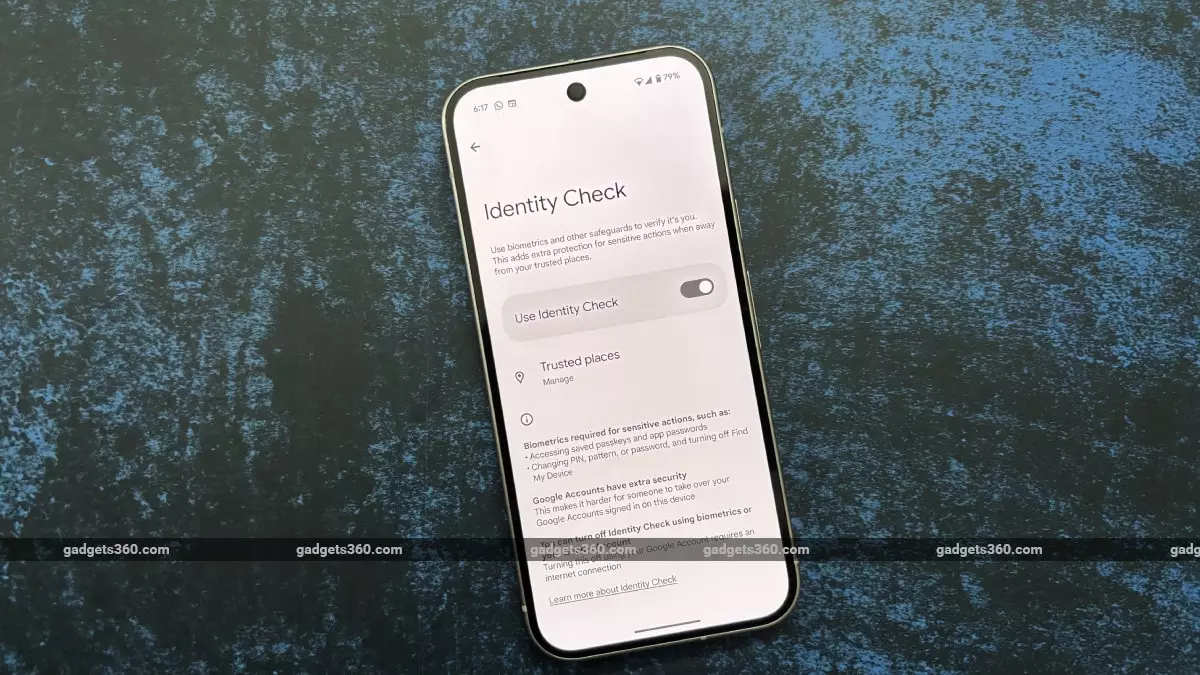In a world where personal data is under constant threat, the introduction of robust security measures has become a paramount concern. Google, a tech giant that continuously strives to enhance user safety, is expanding the availability of its Identity Check feature, now making it accessible on a wider range of devices beyond just Google Pixel and Samsung smartphones. This feature is an essential addition to the Android operating system, providing a formidable barrier against data theft, which has surged dramatically in recent times. While Apple has already rolled out a comparable technology called Stolen Device Protection in iOS 17.3, the impending arrival of Identity Check on more Android devices signifies an industry-wide recognition of the urgent need for enhanced security protocols.
Biometric Authentication: The New Normal
At the core of the Identity Check feature is biometric authentication, a technology that marries convenience with security. With this feature enabled, any critical changes to device settings will be locked behind a biometric barrier—ran on class 3 biometric systems, bestowing users with the peace of mind that comes from knowing their sensitive data is protected. The necessity for biometric verification before making any tweaks is a brilliant move by Google. It not only secures the device from unauthorized usage but also acts as a deterrent against the rising tide of smartphone thefts. It’s one thing for a thief to get their hands on your device; it’s another to make significant changes or gain access to your personal accounts without the necessary biometric data.
Apple’s introduction of Stolen Device Protection has set a precedent, urging Google to develop and expand its security features. While some may argue that these updates are merely reactions to security concerns, it’s crucial to view them as vital evolutions for digital users. Biometric authentication, with its unique physical identification methods, is more than just a trendy feature—it’s a critical shield against identity theft in the digital realm.
The Evolution of User Protection
The feature operates through intuitively placed options within the settings menu of Android devices, ensuring that users are not burdened with unnecessary complexity to protect their data. Users can simply navigate to Settings > Google > Theft Protection to enable Identity Check. An intriguing aspect is that the feature is not just reserved for the elite smartphones but is expected to reach a broad audience with the rollout of Android 16. This inclusive approach reflects Google’s understanding of the need for universal security measures, essentially leveling the playing field for users of varied socio-economic backgrounds.
One of the standout aspects of Identity Check is its attempt to mitigate the unfortunate reality that even well-guarded passcodes can fall into the wrong hands. Users can find solace in knowing that a mere memorization of their passcode will not suffice for a malicious user intent on breach; they’ll need to breach biometric barriers, which heightens the difficulty level substantially.
The User’s Responsibility
While the rollout of Identity Check is certainly a step in the right direction, one must also consider the role of users in enforcing their security. As tech-savvy individuals, users must be proactive in enabling these features rather than letting them languish in the settings menu. The disabling option requires biometric verification or, alternatively, an online Google account, which brings to light a potential hurdle for users in emergency situations. Therefore, education on the importance of these features and their functionality is critical.
Despite the technological barriers in place, users must remain vigilant. This phenomenon highlights the dual responsibility—tech companies, like Google, are doing their part by providing enhanced security measures, but users should also take the initiative to familiarize themselves with these tools and use them effectively.
A Competitive Landscape for Security in Tech
Moreover, the competition between Google and Apple regarding security features opens the door to further advancements in consumer safety. The rivalry pushes each company to innovate and elevate user protection standards. As more devices begin to adopt similar security features, the potential for reducing the risks associated with smartphone theft and data breaches increases significantly. The more robust these security measures become, the harder it will be for malicious users to exploit vulnerabilities, ideally leading to safer digital experiences for all.
As we move forward into an increasingly digital future, Google’s Identity Check feature is a crucial advancement that can’t be overlooked. It embodies a progressive step toward a more secure landscape for Android users and a necessary evolution in the relentless battle against unauthorized access and data theft.

